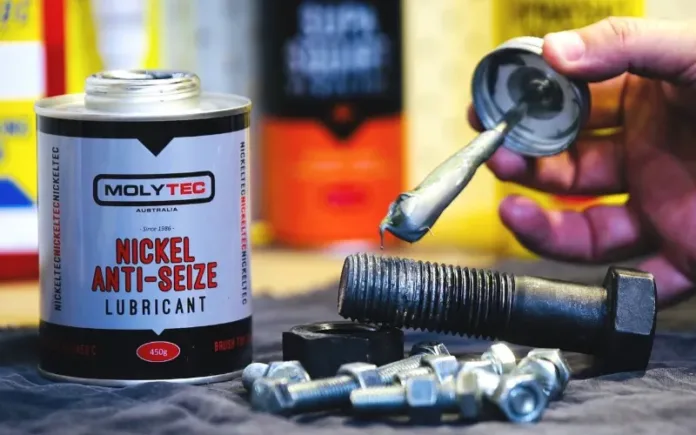An Introduction to Anti Seize Compounds
Knowing how to care for machinery and equipment is crucial for their longevity and optimal performance. One aspect of maintenance that is often underestimated is the use of anti-seize compounds. These compounds play a role in preventing corrosion, galling and seizing of threaded connections and other metal to metal contact points. Whether you are involved in the industry, marine sector or industrial manufacturing incorporating anti-seize can lead to time and cost savings in the long term.
Anti-seize compounds go beyond being lubricants. They create a barrier that reduces friction between metal components ensuring that machinery functions smoothly and remains easy to maintain. These compounds typically contain ceramic particles that improve lubrication properties facilitating the disassembly of parts after prolonged exposure to challenging operating conditions.
What Exactly is an Anti Seize Compound?
Anti-seize compounds consist of a mixture of lubricants and metallic particles engineered to prevent two metal surfaces from sticking. They form a coating that minimizes friction making it simpler to dismantle components following usage. These compounds are available in compositions such, as copper, nickel, and aluminum each tailored for circumstances and uses.
The usefulness of anti-seize compounds is evident across different situations. Whether its preventing stainless steel fasteners from seizing up or safeguarding aluminum components from rust these compounds can address a variety of challenges. Their adaptability ensures that there’s an option for any task making them an essential addition to any maintenance toolkit.
Preventing Corrosion and Rust
One key advantage of using anti-seize compounds is their ability to ward-off corrosion and rust. By creating a layer between metal surfaces these compounds help shield them from moisture and chemicals. Studies show that proper application can significantly extend the lifespan of machinery. This protective barrier plays a role in environments where metal parts are exposed to elements like those found in marine or industrial settings.
The anti-corrosive properties of these compounds are especially valuable, in industries where equipment malfunctions could have consequences. For instance in the aerospace sector preventing rust and corrosion can help prevent breakdowns that might result in damage or accidents. Using anti-seize compounds regularly helps keep machinery running smoothly avoiding expensive repairs and downtime.
Prolonged Equipment Durability
Regular use of seize compounds can notably extend the lifespan of your equipment. By minimizing wear and tear galling and other forms of strain these compounds assist in preserving the functionality and performance of the parts. Decreased friction levels contribute to smoother operation, which’s particularly crucial, in demanding environments like automotive and industrial sectors where machinery operates under harsh conditions.
Extending the equipment’s longevity not aids in maximizing investment returns. Also plays a vital role, in sustaining operational efficiency. Businesses that integrate seize compounds into their maintenance practices often encounter fewer breakdowns and reduced maintenance expenses. This leads to heightened productivity levels and dependable operations.
Simplifies Disassembly Processes
During maintenance and repair activities disassembling joined parts is frequently necessary. Anti-seize compounds greatly ease this process by preventing components from seizing up. This can save time and effort in industrial settings where downtime could result in substantial financial setbacks.
When it comes to maintaining machinery having the ability to easily take apart components is key. It allows for maintenance work and reduces the risk of damaging parts, in the process.
The use of seize compounds makes disassembly a breeze, especially when machinery needs to be dismantled for repairs or routine checks. In situations like breakdowns, quick and smooth disassembly can make all the difference between minimal downtime and extended outages. This kind of efficiency is vital in industries where time equals money and any delay in operations can have consequences.
Enhanced Operational Efficiency
Incorporating anti-seize compounds into your operations can boost overall efficiency. The reduced friction between metal surfaces lowers the force needed for movement resulting in decreased energy consumption. This efficiency not saves costs in the term but also proves to be a wise investment in maintenance. In industries that run equipment continuously cutting down on energy usage can lead to savings over time.
Moreover the lowered friction and seamless operation provided by anti-seize compounds help reduce heat generation. This drop, in operating temperature contributes to extending the lifespan of both lubricated components and surrounding machinery.
Using anti-seize compounds offers various advantages, such, as enhancing efficiency reducing costs and ensuring reliability in both small and large scale industrial settings.
Safety Advantages
Moreover there are safety benefits to using these compounds. Neglected machinery can pose hazards that may result in accidents and harm. Regular application of anti-seize compounds helps mitigate these risks by maintaining equipment, in optimal working order.
In situations where machine parts are exposed to temperatures using anti-seize compounds can prevent thermal seizing thus helping to maintain the proper functioning and safety of the equipment.
By ensuring that machines run smoothly and effectively anti seize compounds play a role, in creating a working environment. In industries like manufacturing, where heavy machinery’s in operation preventing equipment failures is crucial for the safety of workers.
Conclusion
Anti-seize compounds provide advantages that enhance the durability, effectiveness and safety of machinery and tools. From preventing rust to making these compounds are an essential part of any maintenance process. Consider integrating seize compounds into your routine maintenance practices to enjoy these benefits and more. By doing you not ensure that your equipment operates smoothly but also protect against unexpected malfunctions and costly repairs.
